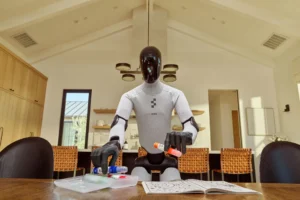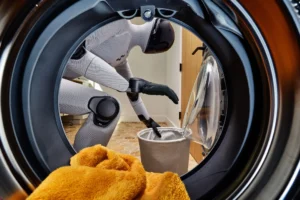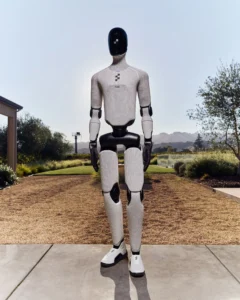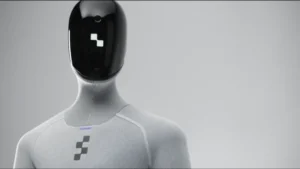Inside the San Jose headquarters of Figure AI, a new revolution in robotics is taking shape. Engineers, researchers, and human “pilots” work side by side with humanoid robots as the startup prepares for the launch of its most advanced model yet — the Figure 03. Backed by tech giants like Nvidia, OpenAI, Microsoft, and Jeff Bezos, Figure AI is betting on a future where humanoid robots perform not just factory tasks but also everyday household chores.
A New Chapter in General Robotics
The Figure 03 marks a turning point in humanoid robotics. Its predecessors, Figure 01 and 02, were proof-of-concept models — capable but limited. The upcoming Figure 03, however, represents a leap toward “general robotics,” an era where machines can adapt to unpredictable environments.
CEO Brett Adcock envisions a world where humanoids take on domestic labor, healthcare assistance, and even off-world construction. “Every home will have a humanoid,” he predicts, estimating the potential global market at over $40 trillion.
Training the Machines: Humans Behind the Robots
Behind Figure’s advancements lies a unique human-robot collaboration. Wearing VR headsets, young engineers record themselves performing daily tasks — folding laundry, loading dishwashers, organizing kitchens. These “pilot” videos feed into Helix, Figure’s proprietary neural network, which learns through limited data to replicate human dexterity and reasoning.
The process underscores Figure’s core belief: the path to autonomous robots begins with human intelligence — recorded, scaled, and perfected through machine learning.
Industrial Partnerships and Real-World Testing
Figure AI has already begun integrating its robots into production lines. Since early 2024, multiple Figure 02 units have been deployed at BMW’s Spartanburg factory, operating 10-hour shifts alongside human workers. The robots handle component placement on the assembly line — a tangible step toward blending humanoid automation with industrial precision.
These collaborations not only refine Helix’s capabilities but also accelerate the transition from laboratory research to scalable manufacturing.
Ethics, Safety, and the Social Contract
Despite the optimism, experts warn of significant ethical and safety challenges. A humanoid capable of autonomous reasoning and movement poses risks beyond software errors — from physical safety to data privacy. Adcock acknowledges these hurdles, emphasizing that each Figure 03 unit will be designed to be “overpowerable and outrunnable” by humans.
The company also pledges to anonymize all household data collected for training purposes, mirroring Google’s Street View privacy standards. However, the rise of humanoid labor invites deeper societal questions about job displacement, economic inequality, and the evolving human-machine relationship.
Strategic Significance: The Next Industrial Revolution
If successful, Figure AI’s humanoid robots could redefine the modern economy. The ability to mass-produce adaptable labor could drastically reduce costs, increase productivity, and even offset the demographic decline of the global workforce.
Yet, as former Google robotics VP Hans Peter Brondmo notes, the challenge may be “less technological and more political.” The arrival of humanoid labor demands a rethinking of wealth distribution, human purpose, and the very structure of modern society.

